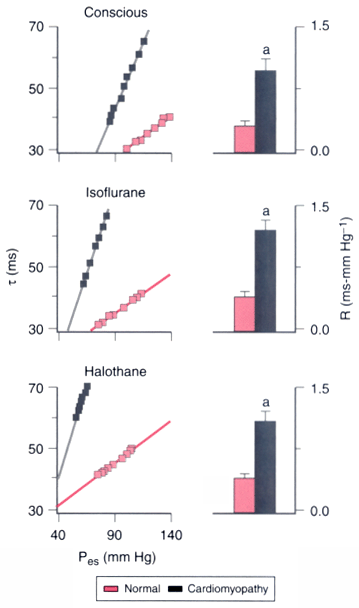Figure 7-7
Linear relationship between the time constant of isovolumic
relaxation (τ) and left ventricular end-systolic pressure (Pes
) during
inferior vena caval occlusion (left panels) in a
typical dog before (red squares) and after (black
squares) the development of pacing-induced cardiomyopathy in the conscious
state and during isoflurane and halothane anesthesia. The histograms illustrate
the slope (R) of the τ versus Pes
relationship in the conscious state
(top right panel) and during isoflurane (middle
right panel) and halothane (bottom right panel)
anesthesia before (red bars) and after (black
bars) pacing. a, Significantly (P <
.05) different from normal myocardium. (Adapted from Pagel PS, Hettrick
DA, Kersten JR, et al: Isoflurane and halothane do not alter the enhanced afterload
sensitivity of left ventricular relaxation in dogs with pacing-induced cardiomyopathy.
Anesthesiology 87:952–962, 1997.)

